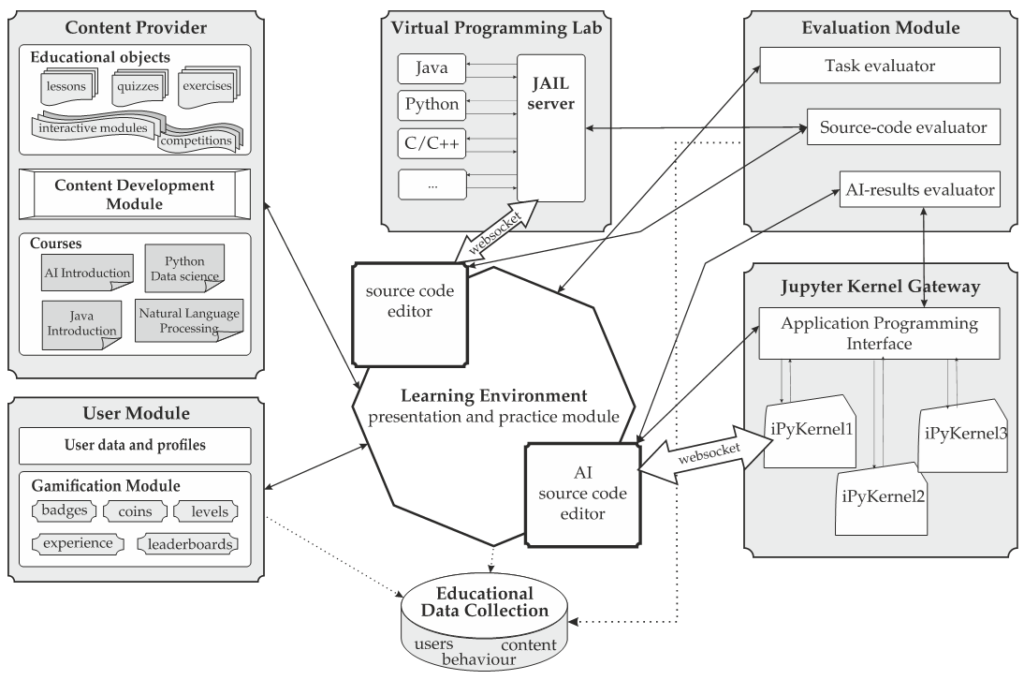As part of the dissemination activities of the project and in addition with the aim of obtaining feedback on the design of the model covering the activities of the FITPED-AI project, two articles were published at the conference Theoretical and Practical Aspects of Distance Learning (DLCC2022):
Proposal of Artificial Intelligence Educational Model Using Active Learning in a Virtual Learning Environment aims to identify techniques and content used in university teaching AI and its pros and cons. Subsequently, it identifies suitable forms of AI teaching for MOOCs, building on the experience and the possibilities of integration into the most modern educational environments. As a result, the article proposes an educational model based on a combination of active learning and a virtual learning environment that supports the distribution of educational content to the broadest possible groups of people interested in AI. At the same time, it describes the requirements and process of integrating the Jupyter notebook microenvironment into an independent web application, which is an essential prerequisite for connecting MOOC and computing server infrastructure.

Logical and communication structure of the technological solution ensuring coverage of the requirements of the educational model over the Priscilla system (a case study of the FITPED-AI project)
Identification Of Students With Similar Behavioural Patterns Using Clustering Techniques presents research in which an unsupervised clustering algorithm is applied to logs to identify groups of students with similar characteristics based on their actions within the context of course data. The most widely used metrics were used to evaluate the proposed clustering model (Silhouette Coefficient, Davies-Bouldin Index, and Calinski-Harabasz Index). The research results revealed that the k-means clustering algorithm is suitable for identifying students with similar behavioural patterns.
